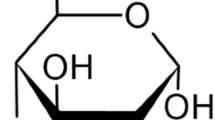Abstract
Objective: To assess the effect of temporary occlusion of hepatic blood inflow on hepatic cancer treated with diode-laser induced thermocogation (LITT). Methods: The carcinoma Walker-256 was implanted in 40 SD rat livers. Twelve days later, the animals were randomly divided into 4 groups. Group A received LITT alone; group B received hepatic artery temporary occlusion during LITT; group C received portal vein temporary occlusion during LITT; group D received hepatic artery and portal vein temporary occlusion during LITT. Tumors were exposed to 810 nm diode-laser light at 0.95 watts for 10 min, from a scanner tip applicator placed in the tumor. At the same time, the intrahepatic temperature distribution in rats with liver tumors was measured per 2 min during thermocoagulation. Tumor control was examined immediately 7 and 14 d after thermocoagulation. Results: There was significant difference of intrahepatic temperature distribution in rats with liver tumors among the 4 groups (P<0.05) except when group C samples were compared with group D samples at each time point, and group B samples were compared with group C samples at 120 s (P>0.05). Light microscopic examination of the histologic section samples revealed three separate zones: regular hyperthermic coagulation necrosis zone, transition zone and reference zone. Compared with the samples in group A and group B, group C and group D samples had more clear margin among the three zones. Conclusion: The hepatic blood inflow occlusion, especially portal vein hepatic blood inflow occlusion, or all hepatic blood inflow occlusion considerably increased the efficacy of LITT in the treatment of liver cancer.
Similar content being viewed by others
References
Erce, C., Parks R.W., 2003. Interstitial ablative techniques for hepatic tumors.Br J Surg,90(3):272–289.
Germer, C.T., Albrecht, D., Roggan, A., Isbert, C., Buhr, H.J., 1997. An experimental study of laparoscopic laser-induced thermotherapy treatment for liver tumor.Br J Surg,84(3):317–324.
Germer, C.T., Isbert, C., Albrecht, D., Roggan, A., Pelz, J., Ritz, J., Muller, G., Buhr, H.J., 1999. Laser-induced thermotherapy combined with hepatic arterial embolization in the treatment of liver tumors in a rat tumor model.Ann Surg,230(1):55–62.
Heisterkamp, J., van Hillegersberg, R., Mulder, P.G.H., Sinofsky, E.L., Ijzermans, J.N.M., 1997. The importance of eliminating portal flow in producing large intra-hepatic lesions with interstitial laser coagulation.Br J Surg,84(9):1245–1249.
Heisterkamp, J., van Hillegersberg, R., Ijzermans, J.N.M., 1999. Interstitial laser coagulation for hepatic tumors.Br J Surg,86(9):293–304.
Li, D.J., Hu, Z.S., 1995. Tumor Thermotherapy. Henan Medical University Press, Henan, China, p. 186–187 (in Chinese).
Matthewson, K., Coleridge-smith, P., O'Sullivan, J.P., North-field, T.C., Bown, S.G., 1987. Biological effects of intrahepatic neodymium: yttrium-aluminum-garnet laser photocoagulation in rats.Gastroenterology,93(3): 550–557.
Nikfarjam, M., Christophi, C., 2003. Interstitial laser thermotherapy for liver tumor.Br J Surg,90(9):1033–1047.
Tanabe, K.K., Curley, S.A., Dodd, G.D., Siperstein, A.E., Goldberg, S.N., 2004. Radiofrequency ablation: the experts weight in.Cancer,100(3):641–650.
Zhang, Z.X., Jiang, D.Z., 1999. Laser-Tissue Interactions: Foundaments and Application. Xian Jiaotong University Press, Xian, China, p. 64–65 (in Chinese).
Author information
Authors and Affiliations
Additional information
Project supported by the National Basic Research and Development Program (973) (No. 863-410-2001-5) of China and Science Foundation of Zhejiang Province (No. 2004C33016), China
Rights and permissions
About this article
Cite this article
De-fei, H., Song-ying, L., Li-min, T. et al. The effect of hepatic blood inflow occlusion on hepatic cancer treated with diode-laser thermocoagulation. J Zheijang Univ Sci B 6, 232–235 (2005). https://doi.org/10.1007/BF02842457
Received:
Accepted:
Issue Date:
DOI: https://doi.org/10.1007/BF02842457




